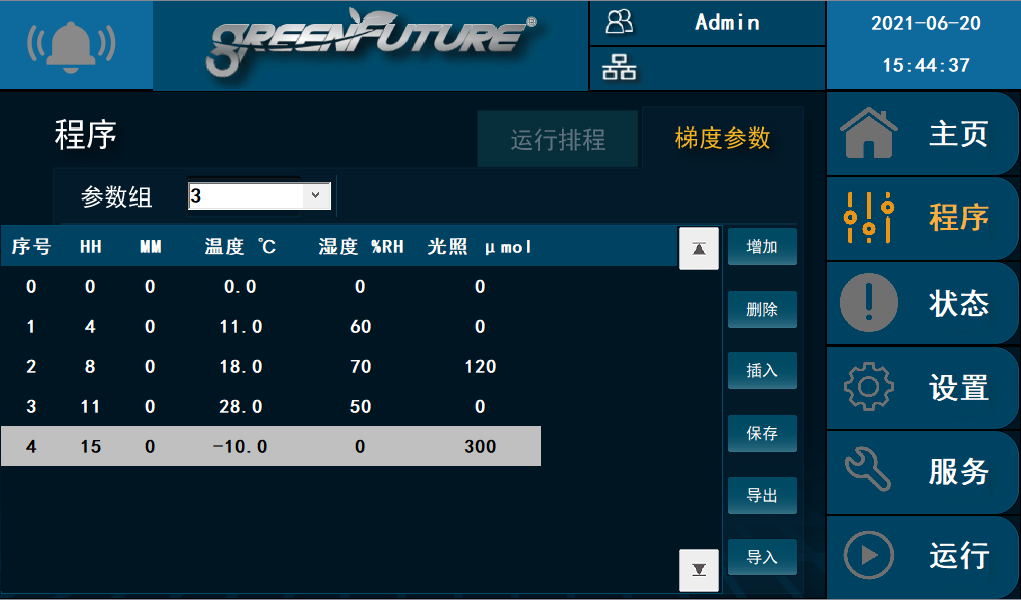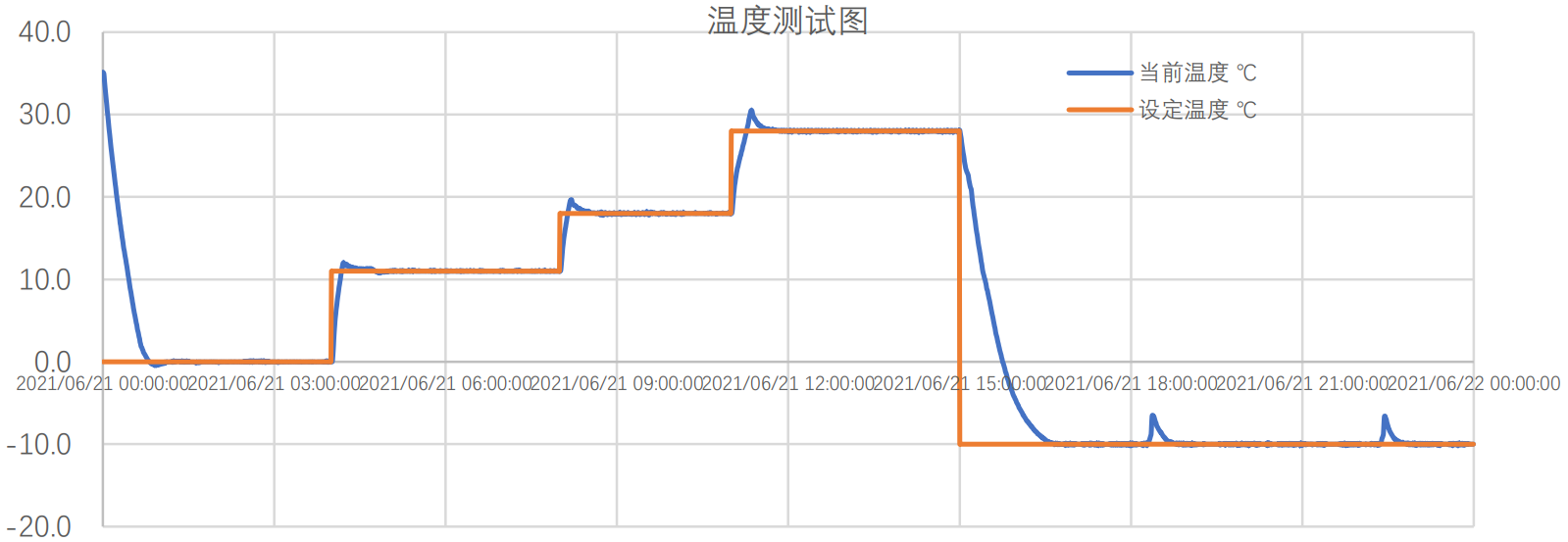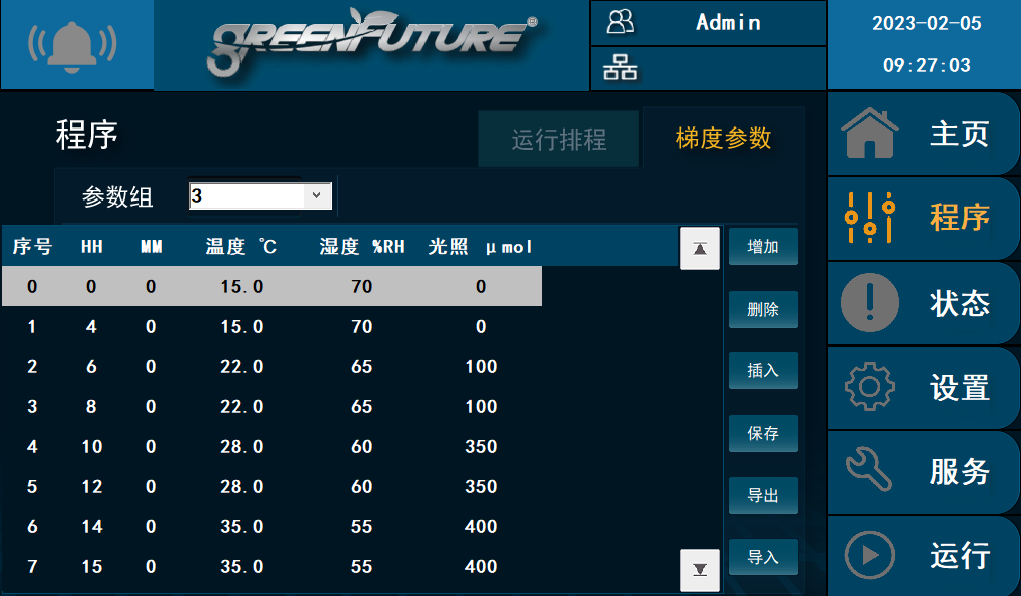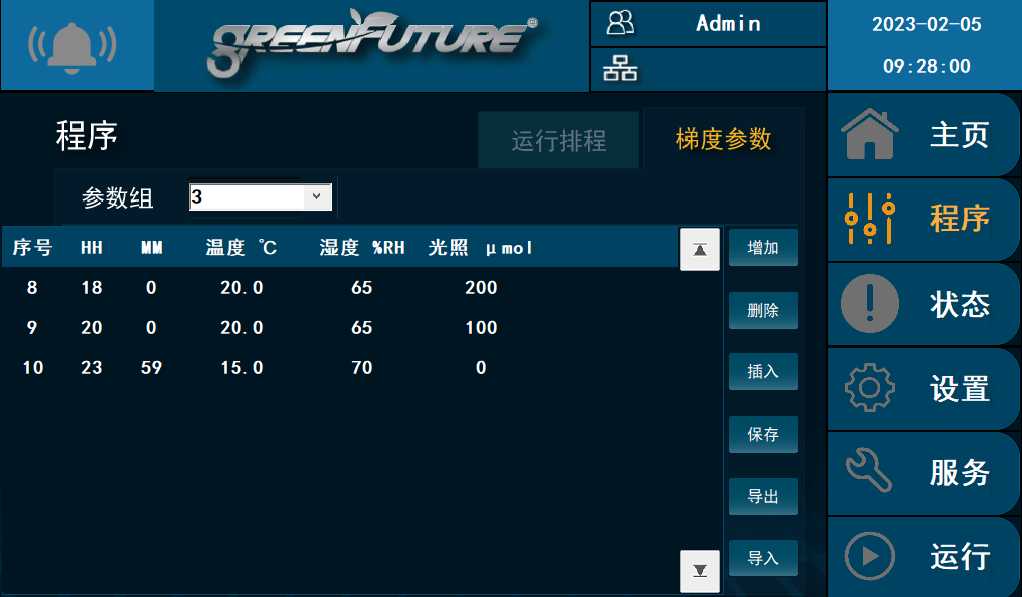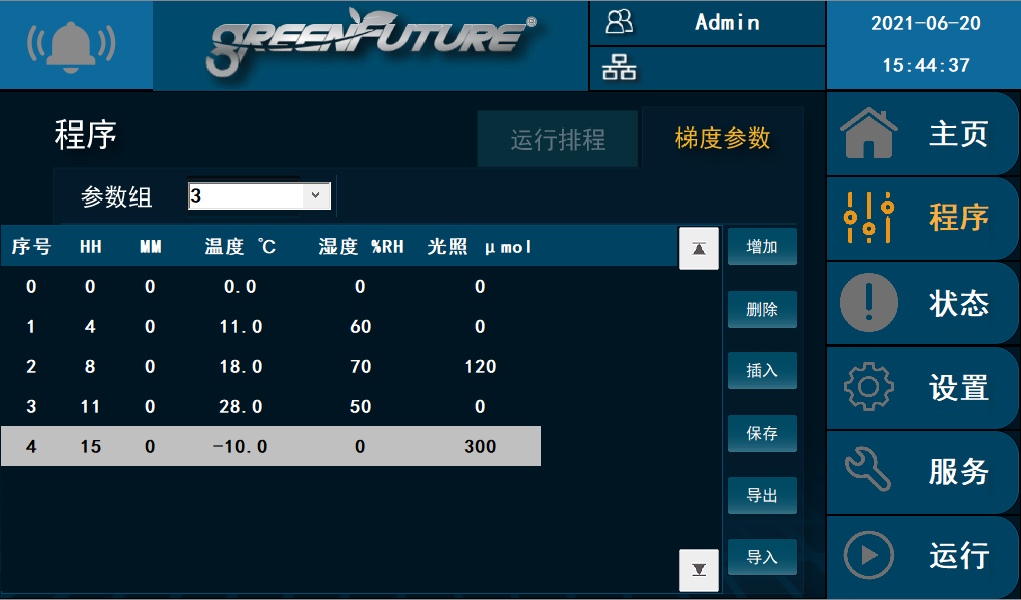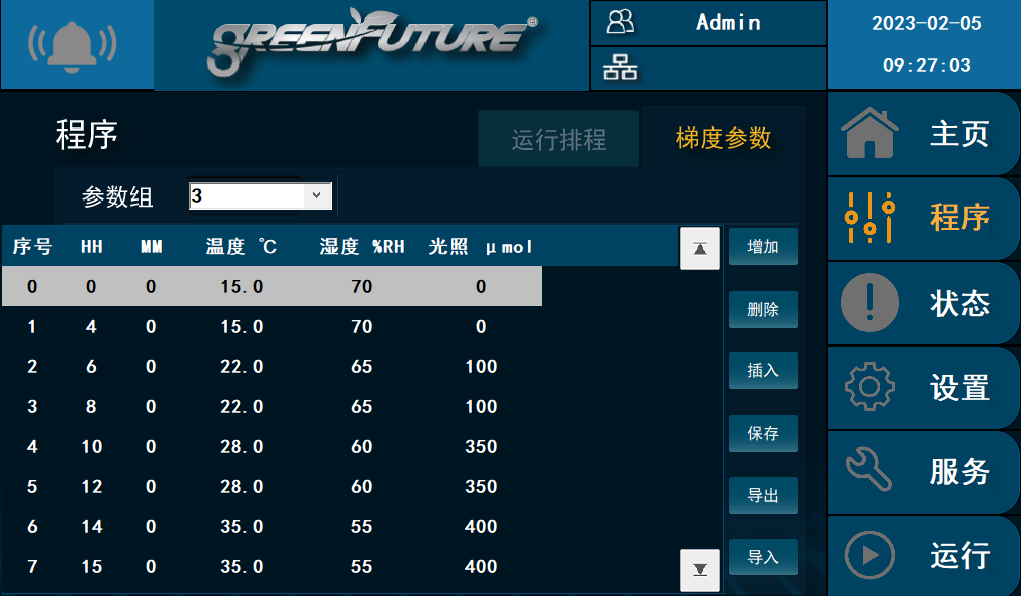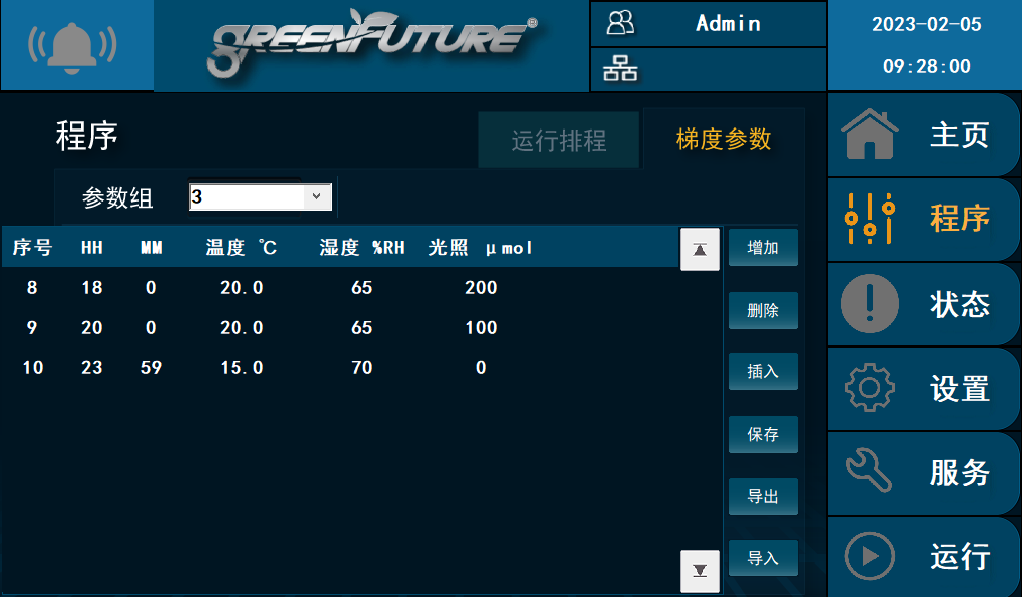Running Modes
STEP and RAMP
GreenFuture's latest control system offers two parameter running modes: STEP and RAMP.
The following section outlines the characteristics and differences between these two modes.
|
|
|
|
1. STEP |
|
|
The STEP mode is a parameters running mode that regulates the stepwise alteration of parameters. The specific performance of STEP mode is: when time point A is reached, the system initiates execution of the parameter instruction associated with time point A and rapidly achieves stability. This parameter continues to run continuously until the next time point with a different parameter instruction.
Example: In STEP mode, the parameter settings shown in the right picture indicate:
|
|
| STEP Mode Running Diagram: |
|
|
|
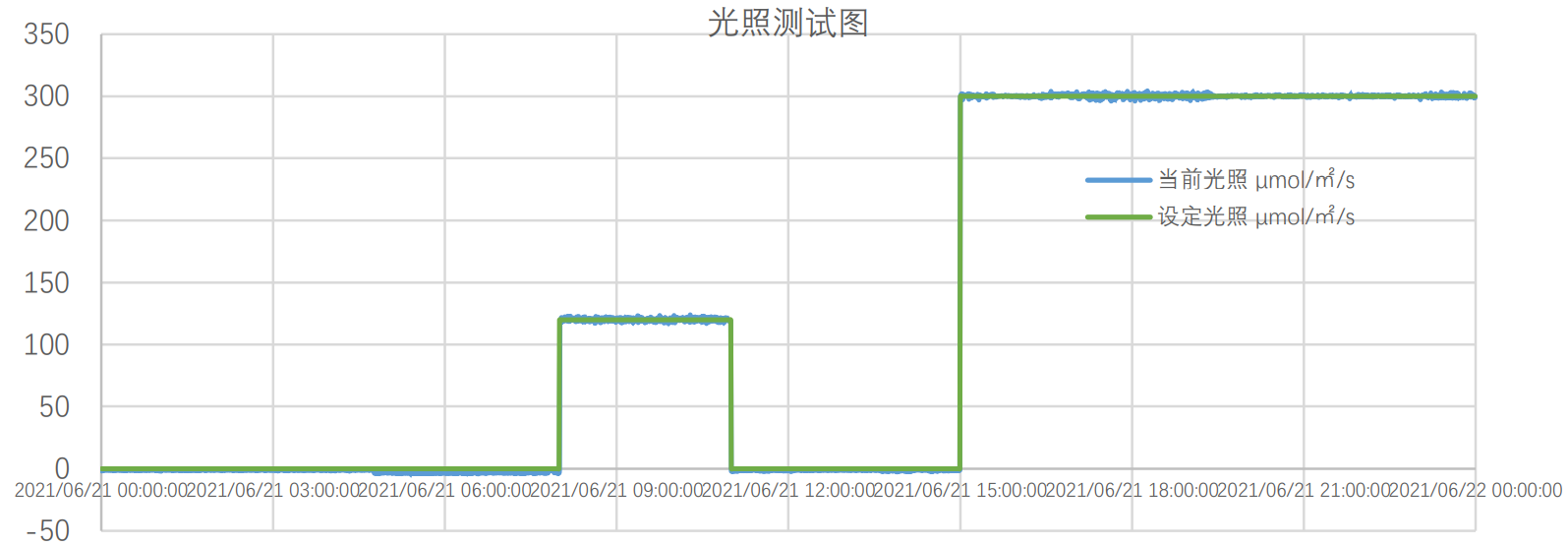
|
|
STEP-Temp. |
STEP-Light |
|
|
|
|
2. RAMP |
|
|
The RAMP mode is a running mode that regulates smooth gradient alteration of parameters. Let param. a represent the settings at time point A and param. b represent the settings at time point B. The specific performance of RAMP mode is: when time point A is reached, the system initiates a smooth and uniform control of parameters from parameter a to parameter b, until time point B is reached and the set value of parameter b is achieved, through the entire gradual process.
Example: In RAMP mode, the parameter settings shown in the right picture indicate:
|
|
|
RAMP Mode Running Diagram: |
|
|
|
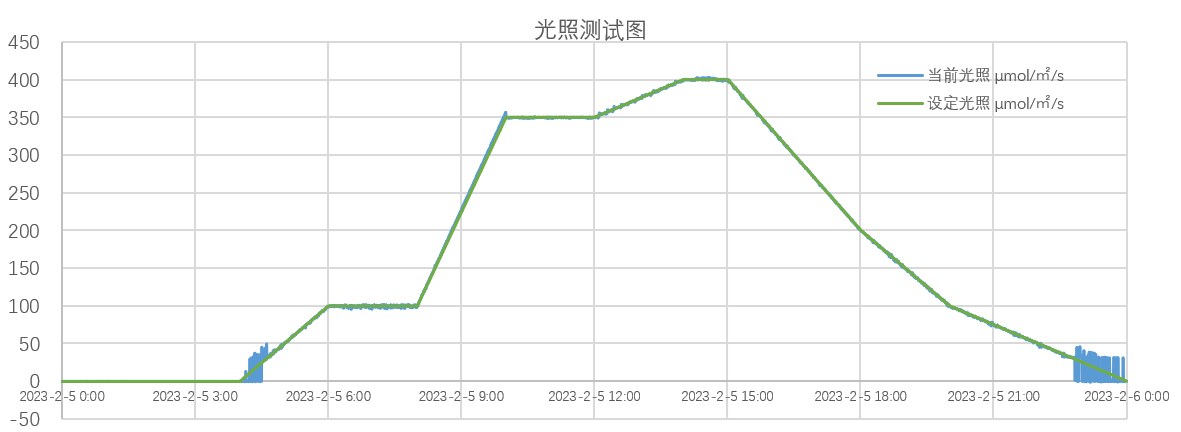
|
|
RAMP -Temp. |
RAMP -Temp. |
|
Running Modes STEP and RAMP |
|
|
|
|
|
GreenFuture's latest control system offers two parameter running modes: STEP and RAMP.
The following section outlines the characteristics and differences between these two modes. |
|
|
|
1. STEP |
|
|
|
The STEP mode is a parameters running mode that regulates the stepwise alteration of parameters. 。 The specific performance of STEP mode is: when time point A is reached, the system initiates execution of the parameter instruction associated with time point A and rapidly achieves stability. This parameter continues to run continuously until the next time point with a different parameter instruction.
Example:
In STEP mode, the parameter settings shown in the right picture indicate:
|
|
STEP Mode Running Diagram: |
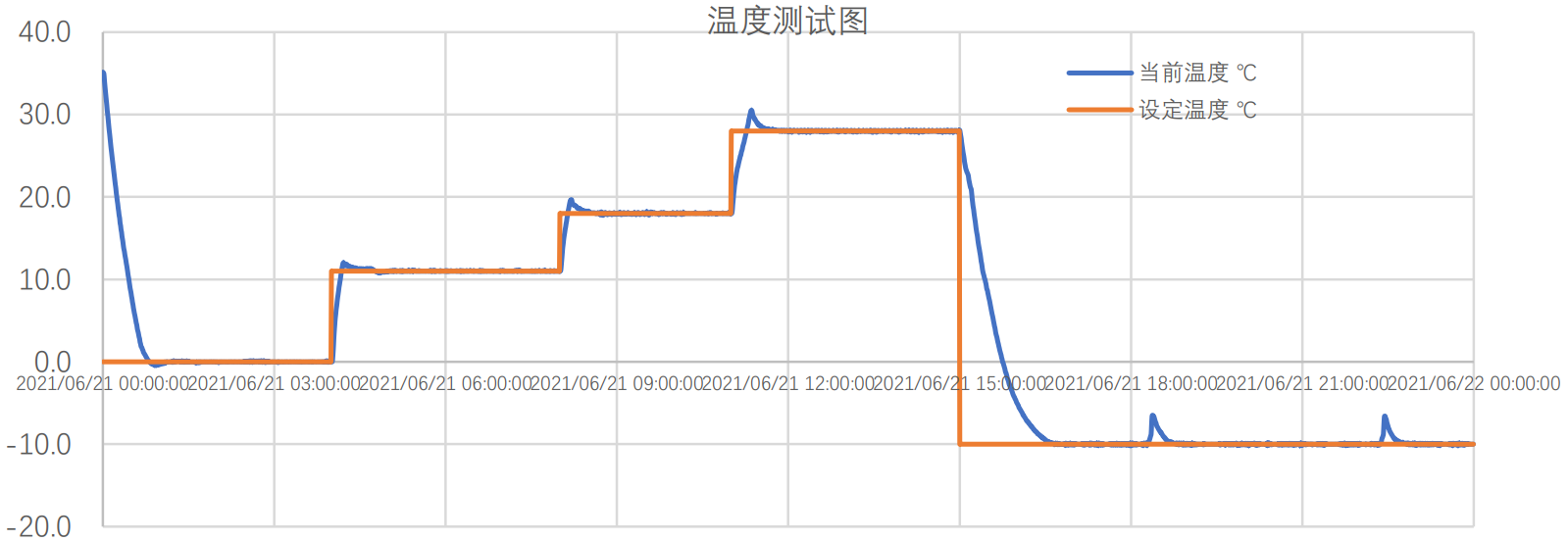
|
|
STEP-Temp.
|
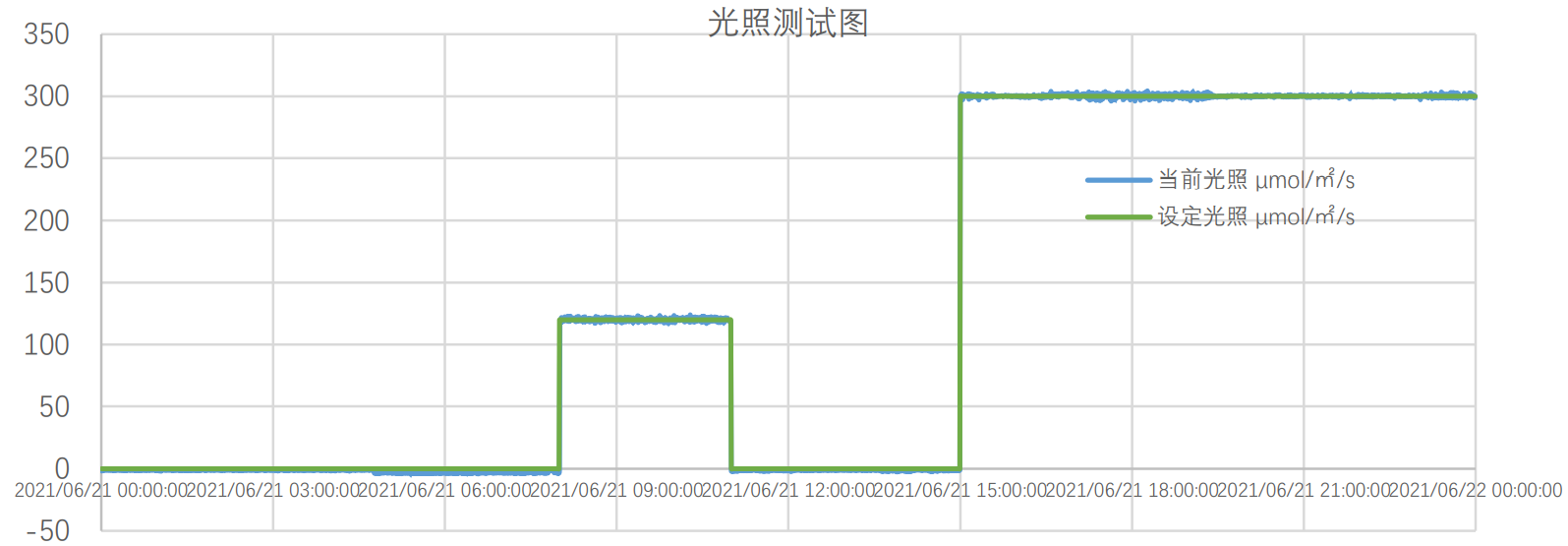
|
|
STEP-Light
|
|
|
|
2. RAMP |
|
|
|
The RAMP mode is a running mode that regulates smooth gradient alteration of parameters.point B. The specific performance of RAMP mode is: when time point A is reached, the system initiates a smooth and uniform control of parameters from parameter a to parameter b, until time point B is reached and the set value of parameter b is achieved, through the entire gradual process. |
|
Example:
|
|
Example: In RAMP mode, the parameter settings shown in the right picture indicate:
|
|
RAMP Mode Running Diagram: |
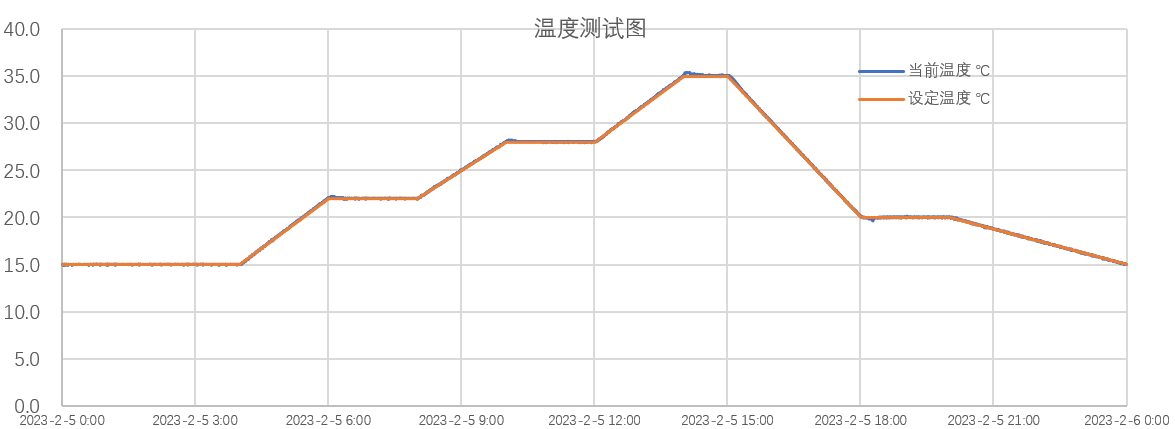
|
|
RAMP -Temp. |
|
|
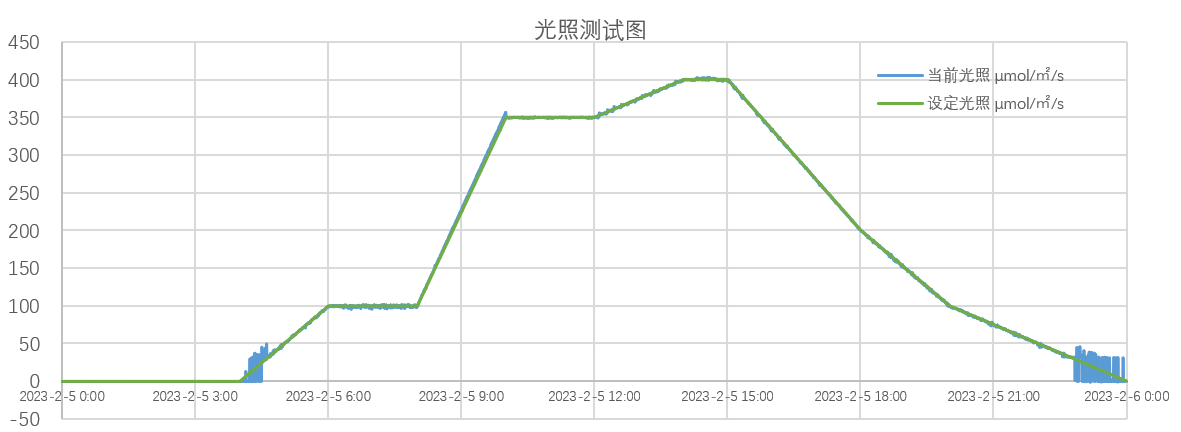
|
|
RAMP -Light. |



